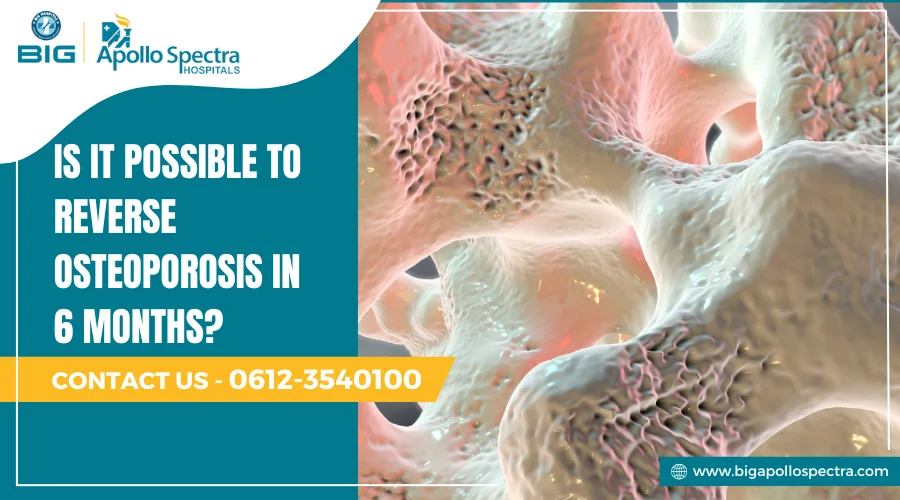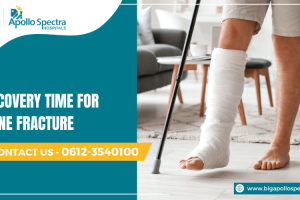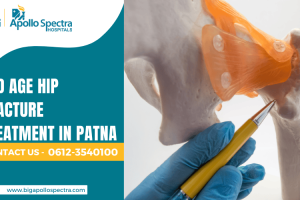Osteoporosis is a progressive skeletal condition which reduces bone density and deteriorates bone tissue, making bones more fragile and prone to fractures.
Millions of people globally suffer from this disease which particularly targets postmenopausal women and senior adults. Even more concerning is the fact that the condition may go unnoticed while it is developing over years. Most people notice the changes when it ultimately leads to bone breaks or spinal deformities.
Moreover, the effects of osteoporosis are much more beyond just physical health concerns. This condition is known to create challenges such as reduced quality of life and freedom of movement while also causing significant healthcare expenses.
The rising awareness of osteoporosis as a “silent disease” has clearly led to a heightened patient concern regarding their treatment options and recovery.
How long does it take to reverse osteoporosis? Most of the people who have osteoporosis want to restore bone health in a short period of time. However, improving bone density may not be as straightforward as most of us think.
This blog today evaluates the expectations you should have for bone density improvement within six months. We’ll also explore evidence-based approaches for osteoporosis treatment while offering useful advice for those who want to boost their bone health.
Is It Possible to Reverse Osteoporosis in 6 Months?
Most patients will not achieve total osteoporosis reversal within a six-month period. Bone remodeling functions through an extended timeline during which old bone tissue gets replaced by new bone tissue.
Each full cycle of bone remodeling usually requires a duration of 3 to 6 months. Plus, multiple cycles are needed for substantial bone mineral density (BMD) improvements. Thus, the timeline is relatively slow.
The best orthopedic doctor in Patna suggests that bone recovery and strengthening happens over time. Even clinical studies of osteoporosis treatments evaluate results at yearly intervals or after a more extended time frame rather than six months. This is because any meaningful changes are not measurable after such a short period.
However, improvements are certainly possible after a 6-month time period.
Patients who respond well to their medications and make comprehensive lifestyle adjustments can see improvements in bone density during this six-month period. The speed at which patients improve also depends on several personal characteristics such as age and gender as well as the severity of bone loss and treatment adherence.
Osteoporosis, in general, cannot be reversed. But what you can do is slow down the progression and take steps to strengthen the existing bone tissues. This will help prevent severe bone issues and untoward fractures.
Thus, the practical approach here is trying to stop further bone loss progression while starting a slow bone strengthening process.
Potential Strategies for Osteoporosis Management
Successful osteoporosis management often depends on combining lifestyle changes with medical treatments.
1. Nutritional Interventions
Adults need to consume 1,000-1,200 mg of calcium daily from foods, such as dairy products, leafy greens, and fortified foods to maintain strong bones. Plus, daily vitamin D intake of 800-1,000 IU will enhance calcium absorption.
However, remember that vitamin D isn’t capable of reversing osteoporosis when used independently. While Vitamin D is essential for maintaining bone health, it seldom reverses established osteoporosis by itself. Usually, you need to complement the intake of Vitamin D with other lifestyle changes and prescribed medications.
Magnesium along with vitamins K and potassium from fruits and vegetables also function as additional nutrients that will promote your bone health.
2. Exercise Regimen
When wondering what type of exercise can reverse osteoporosis, research shows that weight-bearing activities and resistance exercises provide the most benefits.
Walking, jogging, and stair climbing are useful. Bone formation benefits from these activities because they apply mechanical stress to the bones.
Moreover, you are also suggested to start balance training which will help prevent falls and reduce the risk of fractures. Although balance training is not going to directly build bone, it is still useful for someone with osteoporosis and an increased risk of bone fractures.
Follow a 30-minute weight-bearing exercise routine daily for most days of the week combined with resistance training sessions scheduled 2-3 times each week.
Your exercise regimen should match your fracture risk profile as well as existing fitness capabilities. We strongly advise you to consult an orthopedic before starting any intense workout regimens.
3. Medication Options
Patients experiencing considerable bone loss will likely need medication treatment as prescribed by their doctor.
Bisphosphonates such as alendronate and risedronate decrease bone breakdown whereas teriparatide will promote the formation of new bone tissue. Those who are postmenopausal will likely benefit the most from hormone-related treatments offered by our expert gynecologists at Big Apollo Spectra.
On an ending note, reversing osteoporosis through diet and exercise alone without any prescribed treatments or medications may not be a realistic approach.
Patients with mild cases of osteoporosis might see improvements through lifestyle changes alone but those with moderate to severe osteoporosis need both medication and lifestyle adjustments to achieve the best outcomes.
Reversing osteoporosis without medication is never guaranteed, especially for advanced cases. But because diet and lifestyle changes have shown to be very effective, you must take all the preventative measures.
Treat Osteoporosis, Reclaim Your Active Life
How long does osteoporosis take to heal? The process of rebuilding bone takes months and years of ongoing effort instead of just weeks. Although six months will not be enough to achieve complete bone healing, this duration provides essential groundwork for future bone health.
A well-rounded approach combined with regular effort and patience is the only way to feel any meaningful progress.
Patients should set achievable goals by understanding that bone density improvements will happen with step by step changes. You should aim at eliminating fracture risk and improve overall bone health instead of expecting complete recovery in a brief period of time.
Anyone concerned about their bone health should seek professional guidance. Optimal osteoporosis treatment requires personalized bone health advice based on individual health characteristics, including age and gender as well as the individual’s fracture risk and current health condition.
A renowned ortho hospital in Patna, Big Apollo Spectra, with a modern and scientifically advanced orthopedic department provides specialized treatment plans for fractures that result from osteoporosis. Through evaluations tailored to assess risk factors and scope for recovery, this super-speciality hospital offers a group of experienced specialists who can help you manage the condition better.
As osteoporosis and its related complications often require the care of multiple specialists from different medical fields, you are better off choosing Big Apollo Spectra’s multispeciality care as your health partner.
Your final takeaway from this blog should be that bone health requires continuous care throughout every stage of your life.
Strengthening bones and lowering fracture risk in osteoporosis can be achieved through proper nutrition combined with appropriate exercise and medication when prescribed. Also, remember to see your ortho doctor for ongoing monitoring of bone health and recovery.





